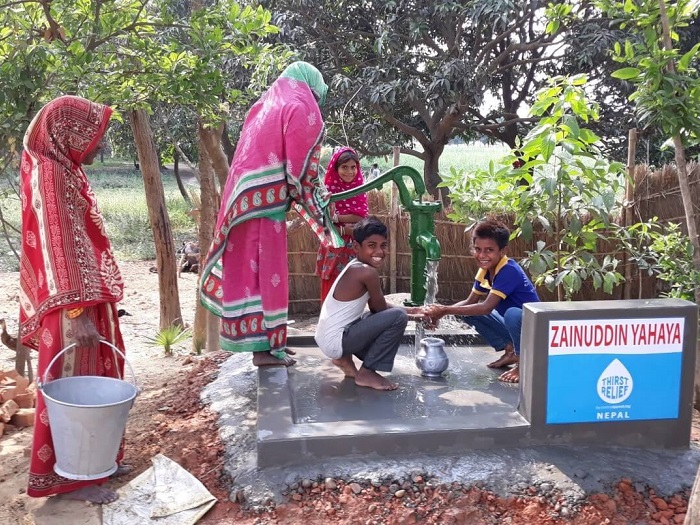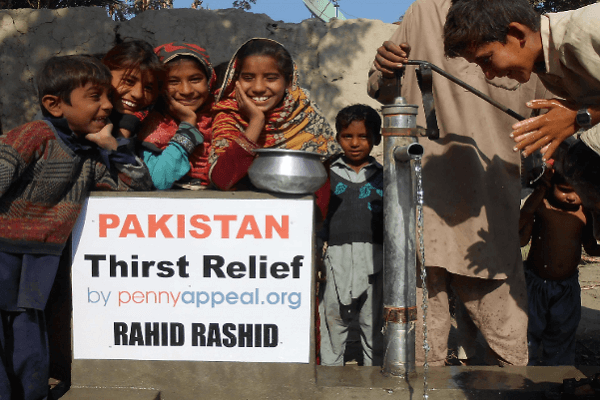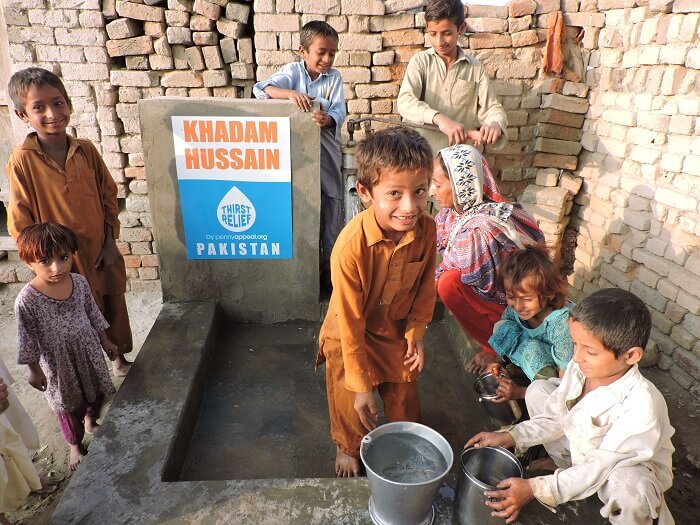Do you know how much water we waste?
“Do not waste water, even if you were at a running stream” – Prophet Muhammad (saw)

Water is everywhere. It’s in our food, our tea and coffee, we need it to make our clothes, our cars, and our laptops - in fact, we’re made of it! The human body is 60% water. We need water to survive, and with 71% of the earth’s surface being made up of water, it seems there should be plenty for us all, right? There should be no need to worry about water running out… right? Wrong.
Most of the earth’s water is saltwater which we can’t drink; only 2.5% of water in the whole world is freshwater which is safe and available for us to drink. Each and every human and animal on the planet uses this 2.5% of fresh water and the truth is, we don’t share it very well. While developed countries tend to waste water, 844 million people in developing countries lack access to safe drinking water. It gets worse…
It’s time to start reducing the amount of water we waste
Water is a finite resource, which means one day it could very well run out. While our need for water increases as populations rise, our water supply doesn’t. As a global community, we all take from the same source. How people in developed countries consume water has a direct effect on the amount of clean, safe water available to people in developing countries. That means we all have a social responsibility to use water wisely. Since fresh water is essential to life, everybody should have an equal right to it.
If each person in the world took active steps to reduce the amount of water they waste, it could help reduce the impact of water shortages and drought across the world. The United Nations has already warned that if something doesn’t change, more than five billion people could be affected by water shortages by the year 2050.

How much water is wasted every day?
Think you don’t waste water? Calculate youwater footprinto find out how much your household uses each day. The answer might surprise you!
It’s estimated that the average American uses about 378 litres of water a day, while the average European uses around 250 litres of water. To give you a visual image of that: I need you to imagine a room filled with 250 of those big one litre bottles. That suddenly seems like a lot of water, doesn’t it?
In comparison, people in developing countries have about 19 litres to use every day – assuming that they have anything at all. We use water for everything, not just drinking, so let’s talk about our other wasting habits.
How do we waste water in our homes?
If you think the only way twaste wateis by letting tap water flow for too long - and yes, that is a huge waste of water - you’re wrong again! Let’s check out somwaste watefacts.
Did you know:
• One bath uses about 80 litres of water
• When you flush the toilet it uses around 4 litres of water
• One full load in the washing machine uses anything between 50 and 100 litres of water
• A five-minute shower uses 45 litres of water

Water shortages happen all over the world
Sometimes, we think these issues only affect people on the other side of the world; maybe someone in a village deep in Africa or a family in rural Indonesia, but if you pay attention, you’ll start to realise this problem is really close to home. In May 2020, the UK had less than 3.5 inches of rainfall, marking our driest May to date. While sunny weather is always welcome, May 2020 was also the start of Lockdown here in the UK because of COVID-19, meaning more people were at home using water. This combined with the reservoir levels dramatically dropping, meant the UK was faced with yet another draught, similar to the one we experienced in the 2018 heatwave.
If you keep up with the news, you’ll know that there have also been serious water shortages, restrictions and issues in some states of America. As of January 2020, the Flint Michigan water crisis, which started in 2014 when lead and copper pipping poisoned the city’s drinking water, is still ongoing. In February 2018, drought monitors announced that half the state of California was in drought. With increased water consumption, global warming and misuse of our resources, water scarcity is increasing all over the globe.
The world watched in horror in 2017 Cape Town’s government counted down to the ominous ‘Day Zero’, the day that dam levels would be so low that taps would have to be turned off and people would need to go to collection points for their water. Day Zero never came, because residents were shocked into action. They started reducing the amount of water they used and started saving water instead. Even now, every person in Cape Town is restricted to only using 50 litres of water a day. Remember: we said five-minutshower uses 45 litres, and flushing your toilet uses 9 litres.
The situations in Cape Town, Flint and even here in the UK give the sinister impression that we humans will only change our relationship with water when we’re on the brink of disaster, or worse; when it’s already too late. When you think about it, the solution is pretty simple – and if we each try to change our water consumption habits, we might be able to do something about this global crisis.
In short?
Don’t waste water.

You can provide clean water by building wells with Penny Appeal
In addition to cutting down your water footprint, you can make a real difference by building water wells with Penny Appeal. Let’s get better at sharing, and making sure that underprivileged communities have the same access to clean, safe water as we do.
Through ouThirst Relief appeal, we transform communities by providing them with access to clean water. Wells give whole villages water not just to drink, buwatethat thecan use to hydrate their animals, wash with and grow their crops. Water doesn’t just save lives; it builds lives too.
FRIDAY 6 SEP 2019
